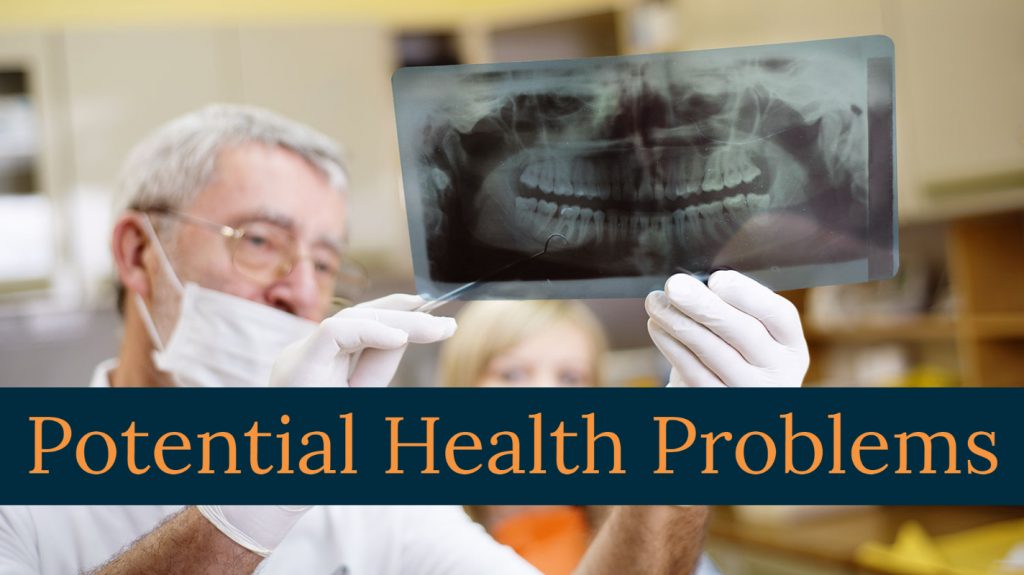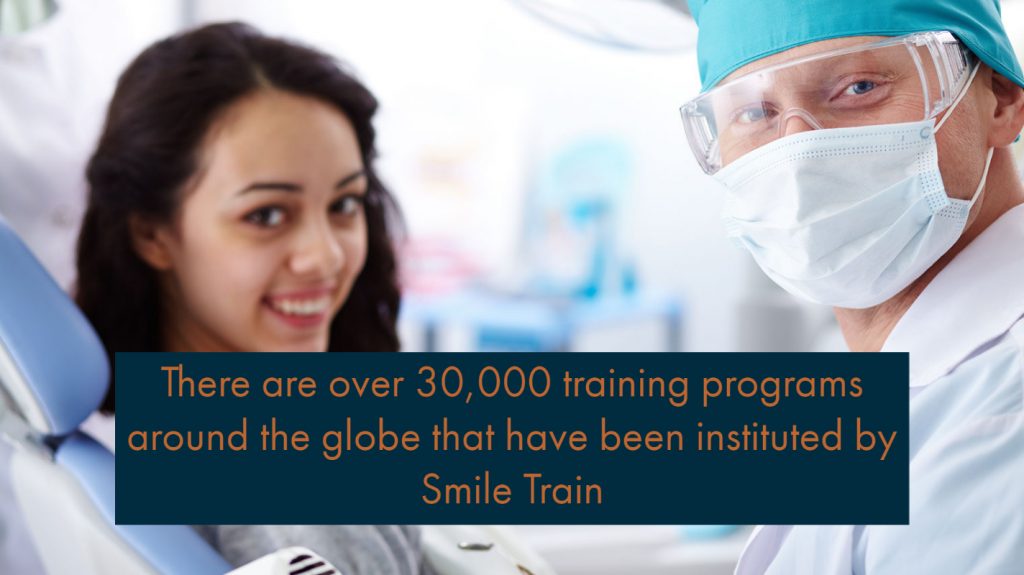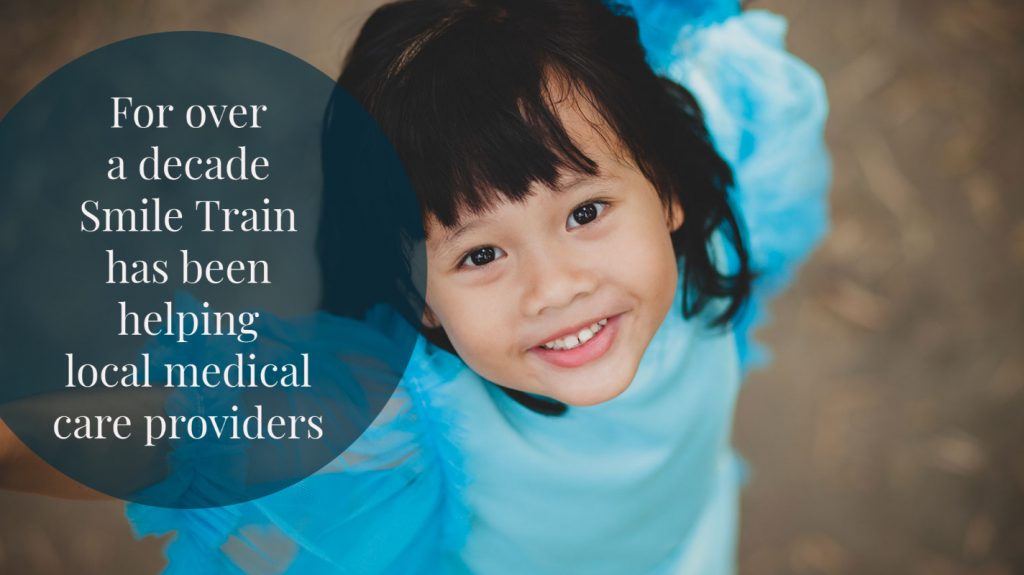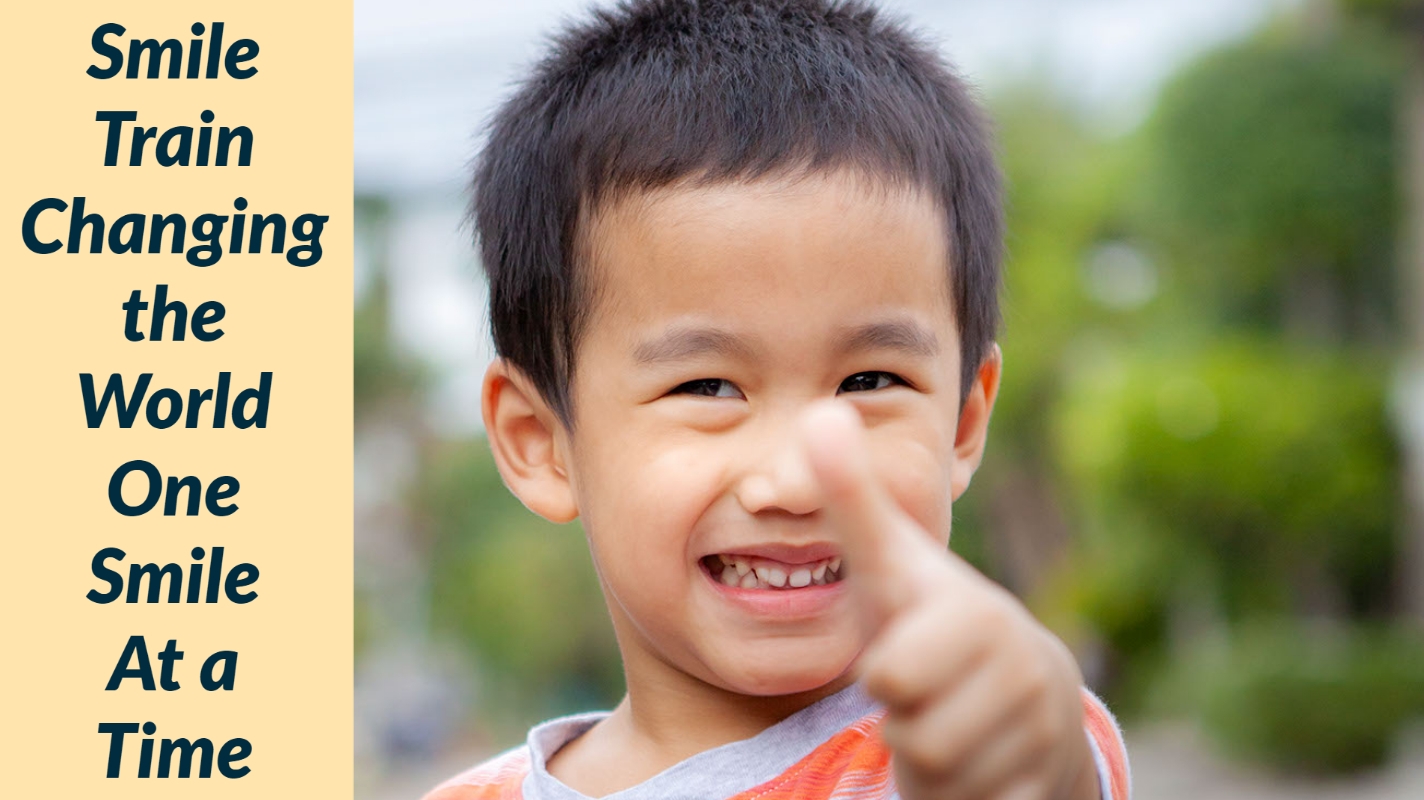
In the United States we often think of dentistry for children and families as something that helps us to “look good” and enjoy good oral health. For some children around the globe dentistry for children and families is life-changing.
Children born with cleft palates are often ostracized and isolated in many regions of the world, and struggle with speech, hearing, and breathing difficulties. Dentistry for children and families that are often taken for granted in the US is hard to access for many of these families around the globe. There is an organization that helps children born with cleft palates that are changing lives around the world.
What is a Cleft?
During fetal development body parts fuse together, a cleft develops when the palate (roof of the mouth) of the lips does not fuse together during fetal development. The problem can be easily corrected through cosmetic dentistry, but unfortunately, in many areas of the world, access is very limited.
Different Levels of Severity
In some cases the lip is affected, in other cases, the palate is affected. In other cases, both the lip and the palate are affected. In the case of a cleft palate, the cleft can go from the front of the mouth to the back to the throat and up into the sinus cavity. A cleft lip can be as small as a little notch where the lip meets or it can be as large as a gapping space up to the nose.
A cleft can be diagnosed during an ultrasound examination or it may not be diagnosed until after the birth of the child. Early corrective actions can help to minimize scarring. An exam by a pediatric dentist trained to treat these birth defects is the best course of action.
Most general dentistry services are not well-equipped to manage the needs of a child with a cleft palate or lip. In most cases, dental care, cosmetic surgery, and other professional care are warranted to help the child.
Potential Health Problems

Children that are born with clefts do not only face having to deal with aesthetics there are health risks involved as well. Here are some of the most common health complications from clefts:
- Feeding problems. An infant with a cleft can really struggle to feed. Most babies born with clefts cannot breastfeed. They have to use special nipples on bottles to feed. Because the area did not fuse together properly they cannot suckle properly. It can be a challenge to ensure that the baby is getting enough nutrition.
- Speech problems. Children born with cleft palates and or cleft lips can have difficulty speaking. The muscles that are used to speak often do not work as they should. Speech can be delayed or difficult to understand. Typically, the assistance of a speech therapist can help.
- Hearing problems can develop. Children with cleft palates are more prone to ear infections. Multiple ear infections can permanently damage hearing.In many of the severe cases, breathing problems can develop. In cases where the cleft goes up into the sinus cavity, it can be very difficult for a child to breathe through their nose.
- Dental problems. A child that has a cleft palate also will likely have dental problems. They may need to see the dentist more often and may have to see specialty dentists correct problems.
Clefts are not just about the appearance they can impact a child’s life tremendously. The right team of professionals can easily repair cleft birth defects and provide support to the child to help correct other problems that are associated with this type of birth defect.
The Treatments
Treating clefts require surgery and a team of professionals. Typically the following professionals are involved in treating a child with a cleft birth defect:
- Different dentistry professionals. Dentistry for children and families often will take the lead. For example, there will likely be a pediatric dentist involved as well as an orthodontist.
- Cosmetic surgeon.
- Ear, nose, and throat specialist.
Other professional team members can include a periodontal dentist, speech therapist, occupational therapist, pediatrician, and craniofacial surgeon. The members of the team are largely dictated by the severity of the cleft, the location of the cleft and the areas affected.
It is highly recommended that cleft lip surgery is done before the first year of life is up. Preferably cleft lip surgery is done between the ages of two months and six months. Cleft palate surgery is typically performed ideally between the ages of 9 and 19 months.
Clefts are usually addressed after more life-threatening anomalies are corrected. For example, if the child is in need of heart surgery, this would take priority over the cleft surgery. The ages for surgery can vary depending on the health of the child and other underlying issues.
The Group That Helps
Imagine that you are a parent and your child is born with a cleft defect. General dentistry is not really available in your region, never mind a pediatric dentist or even a pediatrician that can help you to understand what is happening to your child and how to treat it. Unfortunately, this is a very common occurrence in many areas of the world.

Cleft anomalies are the number one birth defect around the globe. They are the most common, and luckily one of the most treatable, that is of course if you have access to the professionals that can treat them. Dentistry for children and families in the US is very accessible but in many areas of the world it is not.
There is a group that is committed to ensuring that every child has a fair chance at living a good life and has a reason to smile. Smile Train has helped over 1.5 million children to get the care that they need right in their own community.
There are other charities that are focused on providing the care that will help these kids to live normal lives, but Smile Train has taken a different approach. Instead of requiring the child to leave their community and travel great distances to get care, Smile Train uses their resources to teach professionals within the community to provide the services.
They utilize the “teach a man to fish” model to reach more children and to simplify the process. Dentistry for children and families in every region of the world can learn how to treat cleft palates and cleft lips with the right instruction and then provide care in their own communities.

Smile Train has worked with over 90 plus countries to elevate cleft care around the globe and ensure that every child that needs help gets it for free. They have over 1100 partner hospitals around the world. There are over 30,000 training programs around the globe that have been instituted by the Smile Train.
Smile Train has had a profound influence on how the world treats children with cleft defects. Dentistry for children and families around the globe that is trained by the Smile Train training has a trickle-down effect. It is the gift that keeps on giving.
Every person that is trained by the Smile Train organization can train the next person and so on and so forth. This model is a highly sustainable model that increases the number of professionals that can treat these types of birth defects exponentially.
Right At Home
For many families with children born with clefts finding resources to repair the issue is only half the problem. Many times resources are not readily available nearby and the family is forced to make their way great distances, sometimes to other countries. The cost is prohibitive to many families and they cannot make the travel arrangements to get the care that is needed. Unfortunately, for many families, there is simply no way for them to travel any distance even if the care is free.
Even if travel costs are covered, and the surgery is free, follow up care may not be available. Of course, if the child with the birth defect is not the only child in the family, that means arrangements for the other children’s care for long periods also has to be considered. It can be a tremendous burden on the entire family if community care is not readily available.
Smile Train removes the obstacle of having to travel great distances or to another country for care by training medical providers within the community. Parents even in the most remote locations can make their way to the nearest hospital to get the care that their child deserves without a tremendous financial burden that they would face otherwise.
Of course, having community care resources to treat cleft birth defects also means that there are not long periods when families have to be separated. The surgery can be done and the child can be discharged within days. Families can be reunited faster, and there is less time missed from other family obligations when community care is an option.
Over a Decade of Service

For over a decade Smile Train has been helping local medical care providers get the training that they need to help children right in their own communities, but that is not all that Smile Train has done. They have helped to start community outreach programs to help spread the word about the care that is available.
Families can learn about dentistry for children and families at local partner hospitals that can help their children for free through community outreach programs thanks to Smile Train. Many parents are not only unaware of what their child’s condition is but are also unaware that the condition is highly treatable. Smile Train training helps community care professionals learn how to spread the word about this condition and the treatment that is available.
Through community education, media, and other resources put in place by the Smile Train more families are able to find the help that they need for their children. Educating parents and health care providers is the single best way to improve the lives of children born with clefts. Care providers beyond general dentistry services are empowered as well to affect treatment and care. Empowering local medical providers through financial support and training has helped over a million children get the care that they need right in their own community.
In addition to the surgery to repair the cleft through the Smile Program children are able to get other essential care in helping them overcome the effects of the cleft. Support for speech therapy, dentistry for children and families, ear, nose and throat care, and more are all part of the Smile Train’s comprehensive care package for cleft care.
One of the biggest problems with “missionary” type programs is that once the team leaves the child does not get the aftercare that they need. It is not enough to do the surgery for free and then hope it all works out for the best. While it is always admirable when anyone volunteers their time and their skill set to improve another person’s life, it is incredibly important that these kids get continued support. It is also incredibly important that community base care providers are able to reproduce the treatment over and over so that every child within the community can get the care that they need.
Smile Train’s model is a highly sustainable model that gives communities the resources that they need to provide care 365 days a year to as many patients that need it. Unlike other programs, there is no “end date” to the care. As long as the child needs the resources they will be made available.
How Can You Help?
Smile Train welcomes all donations to this great cause, but donating is not the only way you can help. You can volunteer your time. You can also hold fundraising events to help spread smiles around the world. If you have a skill set, for example in restorative dentistry consider partnering up and teaching.
Getting involved with Smile Train is easy. There are plenty of opportunities for you to make a difference in a kid’s life through Smile Train. Whether you are in the dentistry for children and families industry or you are just someone that wants to really have a big impact on kids, Smile Train is the perfect opportunity to share some love.
